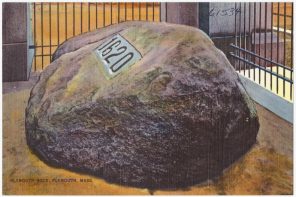I am not a hipster. I know this because I think pitchforks are for hay management; because I do not know the name of Tsai Ming-liang’s cinematographer(s); and because I have never worn a sweatband during the workday. Most importantly, I know I am not a hipster because I do not have an inherent distrust of the popular.
To be clear, a distrust of the popular is not a bad thing. There is a lot within popular productions that should inspire righteous disdain, and to that end generations of admirable academic and lay observers have waxed happy hipster on mass mediocrity. Against this critical discernment, over the last forty years American studies and cultural studies have searched mightily for the intriguing crevices of commercial Teflon. They do so even as many of their colleagues shake their heads, mournfully. Since when did it become our job to make the popular seem smart?
Every field in the humanities has popularizers, and every field has its cultured despisers of those popularizers. No matter your position in that disdain game, it’s hard to escape the benefits of books that make hard stories a little easier. The question remains as to how we appraise these contributions. How do we review those books that eschew academic strategies for commensurability?
According to Sarah Vowell, this shouldn’t be such a hard question. After all, as she writes in her latest book, The Wordy Shipmates, “Americans have learned our history from exaggerated popular art for as long as anyone can remember.” The point is not to denigrate the popular art, but for smart people to provide popular alternatives to academic monographs. “This is sort of my mission,” Vowell has said in interviews, “writing about history, to be a translator.”
Truth be told, distrusting the popular is no longer a prescient pose within scholarly studies either. Studying bestsellers, Billboard favorites, and Nielsen superstars is now requisite for any student of American culture. The question today is no longer whether Judd Apatow or Stephanie Meyer deserves an academic eye, but whether it is our task to make our work as palatable as theirs. I speak, of course, of the problem of popularization.
Is the popularization of the historical subject a problem? Lovers of Stephen Ambrose and Doris Kearns Goodwin now enter stage right, singing songs of readable biographies and Band of Brothers. These are good songs, songs about grandpa’s love of Civil War troop movements, songs about the democratic importance of an educated citizenry. Making complicated topics accessible has a noble tradition, a tradition inextricably bound to such lay groundswells as the Reformation, the French Revolution, and the civil rights movement. The global history of political change is also the history of history’s popularization, a history of regular folk learning about other regular revolutionizing folk and finding the confidence to imitate them.
Enter The Wordy Shipmates. While few hipsters can stomach the postmodern sentimentality of Vowell’s late-Nineties launch pad, NPR’s This American Life, she has earned an admirable audience for her nasal nerd voice (deployed to great effect as Violet Parr in The Incredibles), her rapier writing, and unabashed amateur love of Americana. In addition to her collaborations with Ira Glass, Vowell is the New York Times-bestselling author of four previous books, all of which focus almost exclusively on her exploratory admiration for and curiosity on symbols of American ambition. For this, the Atlanta Journal-Constitution has proclaimed Vowell an “American original” who is “somehow simultaneously patriot and rebel, cynic and dreamer, and an aching secularist in search of a higher ground.”
The aching secularist has found storied higher ground in The Wordy Shipmates, where she applies her anti-cool cool to the tale of seventeenth-century Massachusetts Bay Colony and the settlers of the Great Migration. Like any good popular treatment, Vowell poses herself as a frontierswoman in a caricature. “By and large the Puritans are seen as laughable, written off as stupid, but in fact they’re intellectuals,” Vowell writes. The “typical Puritan spoilsport cartoon” is wrong because it makes Puritans seem priggish when in fact they were just bookish. And they weren’t just bookish, they were nice: “The New England Puritans are not remembered for their sweetness, and yet there was much sweetness in them.” This defensiveness has geek roots. Talking about The Wordy Shipmates, Vowell says her turn to a renewed Puritan was the result of a reader’s respect: “I felt like the Plymouth pilgrims and Salem Witch trial loonies are sort of the only ones who get any attention in American culture, and I’m most interested in the Boston ones sandwiched in the middle, who I feel are more interesting because of their writing.”
Like most popularizers, Vowell’s return to the past has a present imperative. Through a stadium tour of John Winthrop, Roger Williams, and Anne Hutchinson, Vowell believes she might find a way to think about the contemporary American disposition toward intellectualism and empire building. To be sure, as she explains, the current United States “bears a closer family resemblance to the devil-may-care merchants of New Amsterdam than it does to Boston’s communitarian English majors.” And there is much to be disavowed in theocratic Massachusetts Bay where “there’s no agreeing to disagree…there is only agreeing to agree.” Yet like Perry Miller before her, Vowell believes that having respect for the Puritans “is not the same thing as believing in them.”
And so she respects them through an immensely amiable ramble. Popularization’s premise is a usable past easily accessed. In this, Vowell is a champion, redacting theological debates and Pequot War skirmishes to swift effect. As with most front-table nonfiction, The Wordy Shipmates is a book quickly read, leaving in its wake the self-satisfied sheen of a New Yorker profile read during a long cherry blossom bath. The reader feels like she has steamed a little for her learning, but without too much aerobic loss. Criticism of such a subject is a little like whining about your vacation in the South of France. If you didn’t like it, why did you go? Reading such purposefully popular volumes is a voluntary luxury, and one which makes hipster denigration less hip than it is (more often than not) humorless.
Instead of criticizing labors of popularization, it might be more pertinent to see how popularization works. In the case of Vowell, popularization is largely an act of cartoon re-casting and analogical modeling. Popularization can encourage a graphic novel effect wherein William Hutchinson is “whipped” by his wife, Anne, described by Vowell as “the Puritan Oprah—a leader, a guru, a star.” Roger Williams is “Hurricane Roger,” William Laud, the “suck-up,” is “Mr. Arminianism.” John Endecott is “Winthrop’s Welcome Wagon rep” who becomes the “mullah of Salem.” The Pequot War was a “destructive tantrum” inspired by the same frustration that makes “skateboarders…break their own skateboards in half.”
Into this Marvel Comics colony Vowell inserts a host of analogies bent on making Puritan obscurity present. John Cotton’s Southampton sendoff in 1630 is “like scoring Nelson Mandela to deliver the commencement address at the neighbor kid’s eighth-grade graduation.” The Old Testament Israelites are to the Puritans “what the blues was to the Rolling Stones.” Talking about Winthrop’s famed speech “A Model of Christian Charity” “without discussing Ronald Reagan would be like mentioning Dolly Parton’s ‘I Will Always Love You’ and pretending Whitney Houston doesn’t exist.” And “threatening to take away a Puritan magistrate’s right to punish is like yanking the trumpet out of Louis Armstrong’s hands.”
Historians reading this may need to reach for the Pepto-Bismol. Magistrates and musicians? John Cotton and Nelson Mandela? The Puritans and Mick Jagger? Metaphor’s pleasure requires a suspension of analogical responsibility; the comparison need only smack of similarity. And while Vowell need not be held responsible for her anachronistic whimsy, it is worth staring at her as she returns constantly to the pop cultural bank for her metaphorical withdrawal. Vowell knows her audience, and she knows that this audience is not only self-described secular, but also possesses only one common canon, and that is pop production. Thus, the outsized metaphor doesn’t just reduce historical complexity (an indictment unworthy to the genre’s intention), it refigures its genre. Puritanism in this way becomes not merely (understandably, predictably) simplified; it becomes merely another in-joke icon for VH1’s Best Week Ever. The problem with popularization isn’t that it makes things simpler; the problem with popularization is that it makes everything minor mediated for the mass. Thus, in Vowell’s rendering, the “microscopic theological differences” debated among Protestant sects are similar (in her analogical invocation) to the comparative advantages of Godfather Part II over The Godfather Part III. The differences between Puritan intellectualism and dorm room debating are differences for elitist historians, not for the mass constituency which she seeks to convert.
For Vowell, knowing something about Puritans (“It is difficult to understate the Puritan abhorrence of something as seemingly trivial as a vicar’s scarf.”) and their wacky small worlds is better than knowing nothing at all. This is because she believes, earnestly, in the message she is relaying. Praising Winthrop’s “A Model of Christian Charity” (“it isn’t just a sermon, it is an act of leadership”), Vowell extols: “Even though my head tells me that the idea that America was chosen by God as His righteous city on a hill is ridiculous, my heart still buys into it.” To make that city on the hill, we must find heroes in their obscurity and rebuttals. We must, in short, find our inner Roger Williams:
Williams’ greatness lies in his refusal to keep his head down in a society that prizes nothing more than harmony and groupthink. He cares more about truth than popularity or respect or personal safety. And while his pursuit of truth leads him to some equally eccentric beliefs about racial equality, self-determination, and religious liberty that good people now hold dear. In his tormented, lonesome, obsessive, Calvinist way, he is free. I find him hard to like, but easy to love.
Throughout The Wordy Shipmates, Vowell suggests that we live not in John Winthrop or Roger Williams’ world, but in Ronald Reagan’s redaction of their world. This, she argues effectively, is a tragic turn to a noble Arbella image. Ronald Reagan made us believe our city on the hill would come not through serious communitarianism or self-scrutiny, but through self-promotion and free markets. This is a heartening plea. Yet as we continue to debate the proper place of popularization in the academy (and the place of academics in popularization), it is well worth remembering at what cost comes her sermonic accessibility.
For as Vowell strains to celebrate Roger Williams’ iconoclasm, she does not do so through careful treads through his profligate production, nor does she do so by picking through his complicated representation throughout U.S. history. Instead, to inspire her subjects, to move her audience to know, she makes Roger Williams a Sean Penn in Tom Cruise’s world. That she must spoon the subject with celebrity sugar to make the intellectual medicine go down isn’t just compromising to historical complexity. It is one of the many ways we’ve found ourselves here, on hillsides populated with readers who know more about Beyoncé than Byzantium, Buber, or bodhisattvas. It doesn’t take a hipster to know that Ronald Reagan wasn’t just the product of wrong politics, but of wrong analogies. After all, if the Israelites are a little like the blues, why can’t an actor be a little like president?
– – – – –
For more on the history of Roger Williams and his cultural deployment, see Raymond D. Irwin, “A Man For All Eras: The Changing Historical Image of Roger Williams,” in Fides et Historia 26 (Fall 1994): 6-23.
For another perspective on Vowell’s historical (and rhetorical) accomplishment, see Abram Van Engen’s review at “Books and Culture.”




